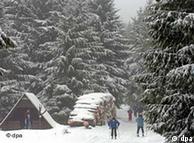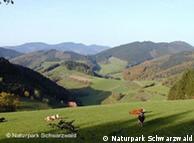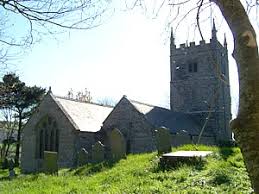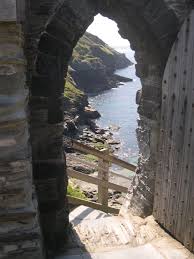|  |
| ||||||||||||||||||||||
|  |
|
|
| |||||||||||||||||||||
|  |
| ||||||||||||||||||||||
|  |
|
|
| |||||||||||||||||||||
From a distance the Skellig Islands appear to be little more than jagged rocks rising out of the stormy Atlantic, eight miles off the West Coast of Ireland. One of the islands, Small Skellig, has always been uninhabited and is a bird refuge, known for its huge colony of gannets. The other, Skellig Michael, is an Unesco World Heritage Site where Irish monks built a monastery sometime between the sixth and ninth centuries. There are more than 20 island monasteries off the Irish coast, but none is so remote and difficult to reach, which is why it remained almost unchanged for more than 1000 years.
Contents[hide] |
The smaller island is Little Skellig (Sceilig Bheag in Irish). It is closed to the public, and holds Ireland's largest and the world's second-largest Northern Gannet colony, with almost 30,000 pairs. It is about 1.5 km east of Great Skellig.
Also known as Skellig Michael (Sceilig Mhichíl in Irish), this is the larger of the two islands, rising to over 230 m above sea level. With a sixth-century Christian monastery perched on a ledge close to the top, Great Skellig is designated as a UNESCO World Heritage Site.
Both of the Skellig islands are well known for their seabird colonies, and together comprise one of the most important seabird sites in Ireland, both for the population size and for the species diversity.
Among the breeding birds are European Storm-Petrels, Northern Gannets, Fulmars, Manx Shearwaters, Black-legged Kittiwakes, Common Guillemots, Razorbills and Atlantic Puffins (with 4000 or more puffins on Great Skellig alone). Smaller numbers of Choughs and Peregrine Falcons can also be seen.
The surrounding waters teem with life also.
Quote
As no wigs are used, participants must grow their hair and beards well ahead of next year's performances. The hair decree, as it is called, comes into force on Ash Wednesday, Feb. 25.
Some 2,500 villagers have applied to take part in the next staging of the play from May to October 2010, according to its artistic director, Christian Stueckl.
"That is 300 more than we had the last time the play was performed in 2000," he told a press conference in Munich, outlining details of his third term in charge of the production.
The passion play has been performed every decade since 1634 by the inhabitants of the village of Oberammergau in the southern German state of Bavaria. Its origin dates back to the Thirty Years War when the village was decimated by the bubonic plague.
The surviving population promised God that if he saved them they would commemorate it by staging a dramatic representation of Christ's suffering, death and resurrection every ten years.
The only time the play was not performed was during World War II.
Local actors
In the works of such poets as Rainer Maria Rilke, trees stand undaunted in the mysterious German forest, permanently providing shelter and succour, wilderness and nature.
Virtually every German town has woods on its outskirts, originally planted to provide timber for construction.
As one forester put it: "The woods are not some remote ideal to be approached in literature or hiking boots, but an intimate part of even the most urbanized life."
"Forest fascination" is associated with the nation's treasury of sagas and fairy tales, where robbers hide out in the woods, bad wolves devour grandmothers and little girls in red-riding hoods, and children lose their way in the thickets and stumble into the hands of evil witches.
Nazi fascination
 Bildunterschrift: Großansicht des Bildes mit der Bildunterschrift: Forests can be enjoyed all year round
Bildunterschrift: Großansicht des Bildes mit der Bildunterschrift: Forests can be enjoyed all year round
Mythical glorification of trees first reached its zenith in the songs, prose and paintings of the Romantic period. The Nazis were likewise obsessed with the concept of the forest.
In 1935, Hitler's deputy and later war criminal Hermann Goering, from his forest hunting retreat, said: "We have become used to seeing the German nation as eternal. There is no better symbol for us than the forest, which has and always will be eternal.
"The eternal forest and an eternal nation -- they belong together," he said before the defeat of the totalitarian Nazi state.
But in a Germany decimated after World War II, Germans still kept heading to their beloved forests.
"It was there," argued Berlin journalist Klaus Hartung, "that the German soul was able to exhale everything that it had inhaled during the history of Germany."
Forest decline
 Bildunterschrift: Großansicht des Bildes mit der Bildunterschrift: The Black Forest has become part of German folklore
Bildunterschrift: Großansicht des Bildes mit der Bildunterschrift: The Black Forest has become part of German folklore
By the late 1970s the decline of the forests had become apparent. In the 1980s in Bavaria alone, 2.5 million hectares of woodland had been visibly damaged by pollution.
Vast numbers of trees in the fabled Black Forest of Baden-Wuerttemburg were under threat. The German word for it is "Waldsterben," or forest death.
One-third of the western part of the country's surface area is forest land.
The shock ran deep when reports became commonplace that the spruce and fir were dying. Acid rain, an airborne poison that originates in factories, power plants and automobile engines was blamed.
In a chemical reaction still not fully understood, when the sulphur dioxide and nitrogen are brought down out of the atmosphere by rain, the resulting liquid renders both water and soil unable to support tree life.
Forest protection
 Bildunterschrift: Großansicht des Bildes mit der Bildunterschrift: Acid rain threatened vast tracts of German forest lands
Bildunterschrift: Großansicht des Bildes mit der Bildunterschrift: Acid rain threatened vast tracts of German forest lands
Groups such as the German Association for the Protection of Forest and Woodlands campaigned to save the woods.
Dozens of other environmental groups, including Robin Hood, the Black Forest Union and the Freudenstadt Action Unit Against the Dying Forest, were dedicated to saving trees.
Ex-chancellor Helmut Kohl warned 20 years ago: "The damage to our forests is dramatic. Our forests are of inestimable importance for the water cycle, for our climate, for our health, for our recreation and for the identity of the German landscape.
"If we do not succeed in saving our forests, the world in which we live will be changed beyond recognition," he told the German Parliament.
Step in right direction
 Bildunterschrift: Großansicht des Bildes mit der Bildunterschrift: German Greens leader Cem Oezdemir has campaigned for forest protection
Bildunterschrift: Großansicht des Bildes mit der Bildunterschrift: German Greens leader Cem Oezdemir has campaigned for forest protection
Since then, an environmental revolution has taken place. Power plants' smoke is filtered, and catalytic converters have been installed in cars, reducing emissions.
Germany's Greens party has also helped bring about change. Now, Germany is the global market leader in wind and solar energy, and is a pioneer in climate policy, hosting regular, lively debates on environmental policies.
That does not mean the nation's forests are now suddenly glowing with health. The latest tree vitality measurements in German forests reveal that the picture remains grim due to the influence of climate change and drought.
But at least for now more attention is being paid to the problem.
The Estonian capital, Tallinn, is a city that’s developed rapidly since achieving independence in 1991 after the break-up of the Soviet Union. At the same time, though, Tallinn is one of Europe’s most historic cities. The origins of Tallinn date back to the 13th century, when a castle was built there by the crusading knights of the Teutonic Order. And, the Estonian capital developed as a major centre of the Hanseatic League.
Report: Helen Seeney

Li Songtang at his museum in Beijing, where he displays relics saved from demolition sites in the rapidly modernizing city.
BEIJING — The destruction of this 800-year-old city usually proceeds as follows: the Chinese character for “demolish” mysteriously appears on the front of an old building, the residents wage a fruitless battle to save their homes, and quicker than you can say “Celebrate the New Beijing,” a wrecking crew arrives, often accompanied by the police, to pulverize the brick-and-timber structure.
But before another chunk of ancient Beijing disappears entirely, a hospice administrator named Li Songtang can often be found poking around the rubble, looking for remnants that honor what was among the world’s best-preserved metropolises until a merciless wave of redevelopment gained the upper hand.
Since the 1970s, when Mao inspired his Red Guards to pummel every “reactionary” Confucius temple and Ming Dynasty statue they could find, Mr. Li has been salvaging architectural remnants and stowing them away, sometimes at considerable risk.
Manchu hitching posts. Ornate wooden doorways. A giant granite horse that graced an emperor’s palace. These and thousands of other objects fill Mr. Li’s warehouse and spill across the grounds of the hospice he runs in Beijing’s eastern suburbs.
Every item has a tale. That Song Dynasty lintel etched with a frenzy of folk scenes? Pulled from a pig sty. The lacquered screen that tells the history of a clan of scholars? Fished from the burn pile.
The most historically significant items are displayed in his private museum, where every Sunday he can be found leading tours and exhorting people to cherish the old before it is too late. “For 50 years I’ve been watching the destruction of this magnificent city,” he’ll say in admonishment. “We’ve been treating history like garbage.”
It is difficult to overstate how much of China’s old imperial capital has disappeared in recent years. When the Communists took power in 1949, they inherited a city marbled with 7,000 alleyways, or hutong, a Mongol word that referred to the space between tents. In Old Beijing, hutong were the capillaries that fed the walled compounds where most people lived.
Even if the Communists forced aristocratic families to share their courtyard homes with scores of working-class families, the structures, and their stone-and-wood artistry, remained largely intact. Monument-building and road-widening claimed swaths of the old city in the 1950s and ’60s, and more damage was done during the Cultural Revolution, but the pace surged in the 1990s, when China’s embrace of market economics fueled a redevelopment juggernaut.
In the years leading up to the Beijing Olympics in August, the destruction took on a manic pace. According to Unesco, more than 88 percent of the city’s old residential quarters are gone, including many government-designated heritage zones whose protections existed only on paper. Today, just 1,300 hutong remain, and many more neighborhoods, like the colorful Qianmen district just south of Tiananmen Square, are scheduled for renewal.
Michael Meyer, who documents Qianmen’s hutong life in his book “The Last Days of Old Beijing,” says most residents are not terribly nostalgic about the old city. For them, a freshly painted facsimile of a 500-year-old Buddhist temple is just fine.
“Imagine waking up one morning and discovering that Chelsea, then Greenwich Village, have been replaced by malls,” he said. “Those who are trying to preserve a bit of the city’s legacy are increasingly isolated and powerless.”
One of Mr. Li’s earliest childhood memories is of the destruction of his family’s courtyard house. Later, during the Cultural Revolution, he watched neighbors burn their own books and smash heirlooms. “People were so afraid that the Red Guards would find antiques in their home, they would toss them into the river at night so no one would see,” said Mr. Li, who came from a family of doctors and teachers.
Like many from the educated classes, Mr. Li was ridiculed, beaten by classmates and then sent to the countryside, where he toiled alongside farmers for nine years. After returning to the city, he devoted himself to rescuing whatever scraps of history he could find. His efforts have sometimes attracted the attention of officials, who have accused him of stealing and obliquely criticizing government policies.
He acknowledges he never paid for anything, although he might give demolition workers a few dollars to cart away a heavy object. “I came to realize that so much of Beijing was destroyed because no one was willing to pay these men for overtime” to haul away relics, he said, half-jokingly.
Mr. Li’s struggle to open his Songtangzhai Museum is a tortured tale that involved five years of kowtowing, cajoling and a “gift” of 148 prized items to the Culture Ministry. The $4.50 entrance fee to his museum, which occupies an 18th-century house, does not cover the cost of operations, so Mr. Li subsidizes it from his own pocket. He says he has never sold any artifacts.
“I have 1,000 stories that I can never tell,” he said conspiratorially, and then offered a few choice words to describe those who blocked his way — and those who have promoted the demise of Old Beijing. But then he corrected himself. “The Communist Party has improved Beijing immeasurably,” he said with a taut smile. “They are doing a wonderful job.”
 |  |  |  | |
| Bath of St. Juliot Parish, Cornwall 850 x 1169 - 99k - jpg freepages.genealogy.rootsweb.ancestry.com | ... in the church at St Juliot. 300 x 225 - 37k - jpg www.thisisnorthcornwall.com [ 更多來自 www.thisisnorthcornwall.com 的資訊 ] | This is St Juliot's church: 1152 x 864 - 117k - jpg www.btinternet.com [ 更多來自 www.btinternet.com 的資訊 ] | Interior of St Juliot's: 1152 x 864 - 45k - jpg www.btinternet.com | St Juliot's is a very pretty church ... 432 x 633 - 312k - jpg kimbofo.typepad.com |
 |  |  |  |  |
| Map showing location of St Juliot ... 431 x 217 - 32k - gif www.boscastlecornwall.org.uk [ 更多來自 www.boscastlecornwall.org.uk 的資訊 ] | The hedges are the view at St Juliot 450 x 309 - 69k - jpg www.cornishhedges.co.uk | St Juliot Church 500 x 335 - 104k - jpg www.otterhamandstjuliothall.org | St Juliot, (Cornish: Sen Julet), ... 300 x 225 - 30k - jpg www.thisisnorthcornwall.com | ... with St Juliot Church, ... 364 x 228 - 9k - gif www.sndc.demon.co.uk |
 |  |  |  |  |
| Churchyard St.Juliot 1600 x 1200 - 22k - jpg picasaweb.google.com | 1 St. Juliot 2 Otterham 3 Trevalga 400 x 413 - 7k - gif www.cornwall.gov.uk | ... St Juliot, Boscastle, Cornwall. 500 x 356 - 52k - jpg www.tintagelweb.co.uk | St Juliot, Cornwall, England other ... 800 x 524 - 153k - jpg www.pbase.com | St. Juliot's Original Watercolour 560 x 768 - 464k - jpg www.daviddareart.com |
 |
 日內瓦位於瑞士西南端,緊鄰祥和平靜的日內瓦湖,是許多重要國際組織,包括聯合國歐洲總部、世界衛生組織( WHO)、世界貿易組織( WTO)、國際勞工組織( ILO)及紅十字會總部的所在地,名氣響亮,讓許多人誤以為日內瓦是瑞士的首都。
日內瓦位於瑞士西南端,緊鄰祥和平靜的日內瓦湖,是許多重要國際組織,包括聯合國歐洲總部、世界衛生組織( WHO)、世界貿易組織( WTO)、國際勞工組織( ILO)及紅十字會總部的所在地,名氣響亮,讓許多人誤以為日內瓦是瑞士的首都。